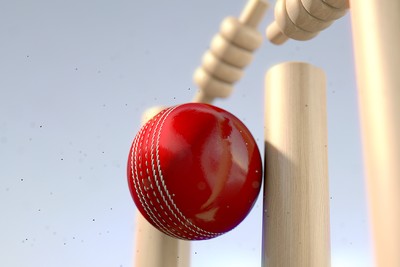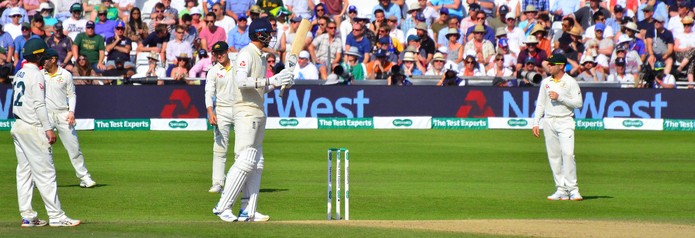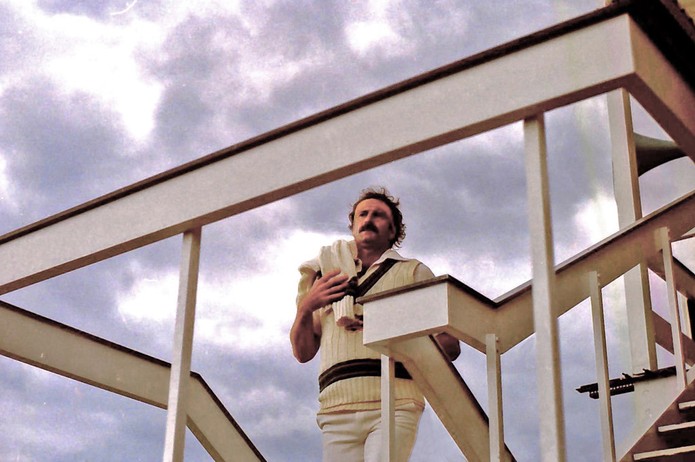 When drawing up a list of the most controversial moments in Ashes cricket history, there’s no shortage of source material.
When drawing up a list of the most controversial moments in Ashes cricket history, there’s no shortage of source material.
And the 2023 edition of the battle for the famous urn between England and Australia served up another addition to the canon with the astonishing stumping of Jonny Bairstow.
After another delivery from Australian quick bowler Cameron Green thundered into the gloves of wicketkeeper Alex Carey, Bairstow momentarily wandered out of his crease believing the ball to be ‘dead’.
But Carey had other ideas, throwing the ball at the stumps and dismissing Bairstow – much to the horror of the packed house at Lords.
It set in motion a fractious afternoon session in which the players, including that bastion of good cricketing behaviour Stuart Broad, were at each other’s throats and even the hoity-toity MCC members at Lords – the stripy tie, champagne and prawn sandwich brigade – got involved by barracking the Australian players as they entered the ground’s legendary Long Room at lunch.
No rules were broken by Carey, although that almost intangible ‘spirit of cricket’ was contravened – as it has been many times during the heated battle for the Ashes urn for more than a century.
As this rundown of the most controversial moments attests, no quarter is ever given between England and Australia….
Bodyline Bother

In the second Australia innings at Lords in 2023, England bowled 98% of their deliveries short of a length – the idea being that the batsman has to evade the ball aimed at their body or head, or take it on by pulling or hooking….a high risk shot that often leads to a wicket.
There’s absolutely nothing wrong with the tactic, and it was one first devised by the English on their Ashes tour to Australia in 1932/33.
Back then, the world of cricket hadn’t seen such a roughhouse strategy deployed – it was largely the idea of England captain Douglas Jardine in a bid to unsettle the imperious Australian batsman Don Bradman, who remains one of the all-time greats to this day.
The ‘bodyline’ series, which England would go on to win 4-1, was so marred in controversy and animosity that diplomatic relations between England and Australia remained frosty for years afterwards.
Broad Refuses to Take the Long Walk

A legend of international cricket, Stuart Broad is also something of a hypocrite when taking the moral high ground.
Back in the 2013 Ashes, he clearly edged a ball from Aussie spinner Ashton Agar to wicketkeeper Brad Haddin, who fumbled the catch before the ball landed in the grateful hands of Michael Clarke at slip.
The umpire, Aleem Dar, somehow did not hear the nick off the edge of the bat, and given that the Aussies had used up all their reviews, Broad survived and went on to compile a match-winning innings.
In theory, Broad did nothing wrong by not ‘walking’ – the act of surrendering your wicket when you know that you’re out. But it does contravene the spirt of cricket….the lanky seam bowler must have a short memory given the barrage of abuse he spewed Australia’s way ten years later.
Full Metal Whack-It

After copping a handsome sponsorship deal ahead of the 1979/80 Ashes series, Dennis Lillee strode out to the middle in Perth with an aluminium bat – the first time that a metal bat had been used in such a high-profile game.
There were no rules against it, as such, although the less-forgiving aluminium soon caused the red leather of the ball to soften – making it harder for the England bowlers to take wickets.
England captain Mike Brearley refused to play on, and when Lillee also refused to change his bat for a wooden one there was a Mexican stand-off – eventually, Australia captain Greg Chappell was summoned and had to persuade Lillee to make the swap, which saw his fiery fast bowler throw the aluminium bat down on the outfield in disgust.
Some 40 years later, the infamous blade was put up for auction – fetching £5,200 as part of a collection from long-standing bat manufacturer Duncan Fearnley.
All Bets are On
![]()
The 1981 Ashes test at Headingley was one of the most extraordinary in cricketing folklore – not always for the right reasons.
Australia had declared on 401 in their first innings before bowling England out for 174 in their opening effort, which meant that only two results seemed likely – an Aussie win or an unlikely, but not impossible, draw.
As England came out to bat again, a bookmaker had secured some advertising space on the scoreboard – they were offering odds of 500/1 about an England victory.
Few took them up on the offer, but two people did: remarkably, Australian wicketkeeper Rod Marsh and that man Lillee did – and they profited to the tune of £7,500 when England rattled up 356 in their second innings before bowling out the Aussies for 111 in their second effort to secure a highly improbable 18-run victory.
Could you imagine two professional athletes betting against their own team in-play these days? They’d be banned for life and could even face criminal charges.
Incredibly, Lillee was nonplussed about the controversy his wager generated.
“I have never had any qualms over the matter and I have never lost a moment’s sleep because of it,” he said.